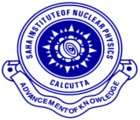Speaker
Description
Observations by the Large High Altitude Air Shower Observatory (LHAASO) have opened a new era of gamma-ray astrophysics. Since becoming operational in 2020, LHAASO has detected more than a dozen ultra-high energy (UHE) gamma-ray sources, most of which are unidentified. The detection of these UHE gamma-ray sources indicates the presence of cosmic ray (CR) accelerators in the Milky Way Galaxy, which can accelerate particles up to PeV energies, commonly known as PeVatrons. Several classes of Galactic sources, such as supernova remnants (SNRs), pulsar wind nebulae (PWNe), and young stellar clusters, have been posited to be potential PeVatron candidates. After it was confirmed that Crab PWN is indeed a PeVatron, the idea gained steam that PWNe must be the leading source class to be PeVatrons in the Galaxy. However, further theoretical explorations of other LHAASO-detected UHE gamma-ray sources seem to tell a different story. In this talk, I will discuss the other side of the story, i.e., whether the spectral and morphological features of the LHAASO-detected UHE gamma-ray sources can be consistently modeled by the interaction between SNRs associated with dense molecular clouds (MCs). By considering multiple LHAASO-detected UHE gamma-ray sources, I will show that the SNR+MC systems can reproduce several observational features of these UHE gamma-ray sources, which indicates that SNRs have the potential to be considered as viable Galactic PeVatron candidates, along with PWNe.

